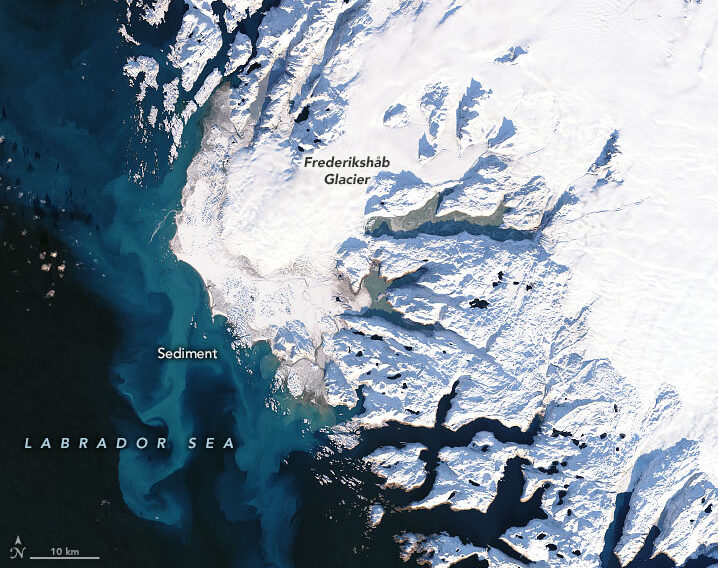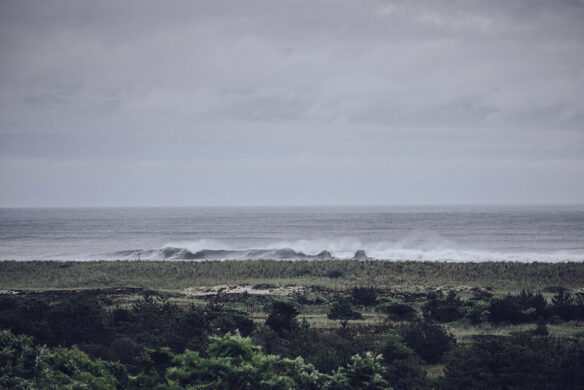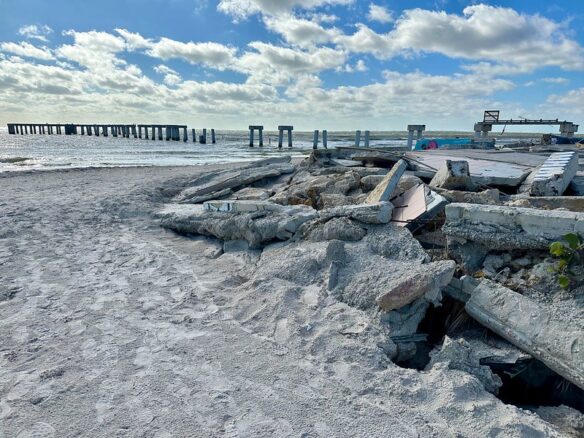Excerpt:
Greenland’s ice sheet is losing 280 billion tons of mass per year, and some models suggest that its glaciers may be melting up to 100 times faster than expected. But flowing off those glaciers comes a potential economic boom: sand.
But flowing off those glaciers comes a potential economic boom: sand. Each season, millions of tons of sediment flow from melting glaciers into the ocean, adding landmass to the largest island in the world. According to a research paper published in Nature last fall, three out of four Greenlanders support extracting and exporting sand — so long as they’re the ones in charge of managing the resource.
For lead author Mette Bendixen, a geographer at McGill University, the study offers a message from Greenlanders to the rest of the world: Greenland plans to adapt to climate change on its own terms.
“When we think about climate change adaptation, it almost always has a negative connotation,” she said in an interview with GlacierHub. “And this is like the opposite. This is saying, climate change is happening — hey, this is something that could be beneficial to us.” In the paper, she and her coauthors refer to this as “opportunistic climate adaptation,” which they argue “remain[s] poorly understood relative to relative to predictors of defensive adaptation.”
Bendixen recalled how her previous research on the potential of sand mining often received some pushback from environmental conservationists, governments, and media. She noted that Arctic communities tend to be viewed by westerners as pristine areas of the world that should be preserved with no change to traditions or landscapes at all. But such clear support from the communities themselves for the exploration of industrial sand mining runs counter to that notion.
“To me, it shows that Greenlanders are saying, ‘We don’t care what the rest of the world thinks — we want to try and look at this ourselves, and see if this is relevant.”
At first glance, sand may seem like an exceptionally ordinary material; our beaches and deserts are covered in it. Our modern lives revolve around sand, from concrete to computer screens to glass containers. But not all sand is created in the same way. Sand from deserts has been weathered primarily by wind, which grinds down the sand in multiple directions. Bendixen compares desert sand to marbles — smooth, rounded grains that don’t compress well for industrial use.
But sand created by glacial deposits is different. Unlike the desert sand, glacial sand primarily arises from two different physical processes. The first process is the slow movement of glaciers atop a landmass, eroding the rock underneath it. “Just imagine a kilometers thick body of ice that grinds through the landscape — it disrupts the surface so much,” Bendixen said. The second process occurs as glaciers melt into streams and rivers, whether as a result of seasonal variability or large-scale climate change. The flow of water slowly erodes the land underneath it — and it creates a specific kind of sand.
“In rivers, you have a variety of grain sizes and more angularity,” Bendixen explained. “You don’t have the scooping back and forth by the wind, you just have a unidirectional flow.” The unidirectional flow results in angular sand grains, which compress much better under heat and pressure. This makes glacial sand deposits ideal for industrial consumption, particularly for creating concrete…
SHARE THIS ARTICLE
More relevant articles:
from Hakai Magazine:
Greenland’s Melting Ice Sheet Brings an Unexpected Flow of Wealth Potential
from the Boulder Today:
Sand from glacial melt could be Greenland’s economic salvation
from the New York Times:
Melting Greenland Is Awash in Sand – Interactive Feature
from Popular Mechanics:
Greenland’s melting glaciers are unearthing a hidden economic goldmine









